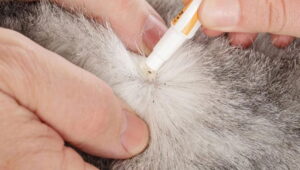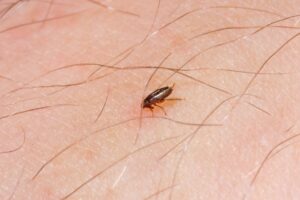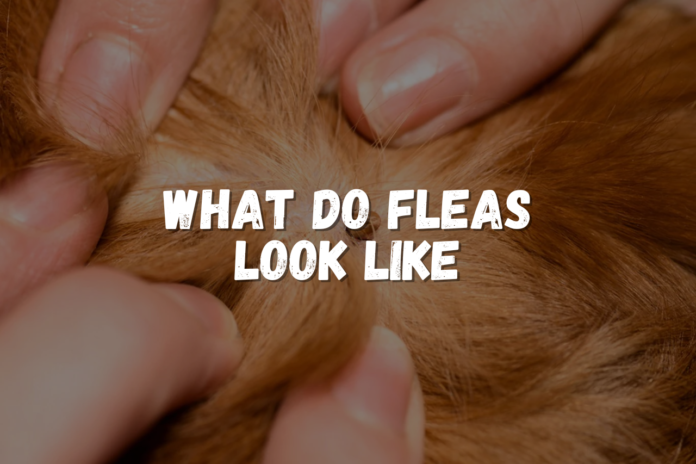Fleas are tiny parasites that can wreak havoc on pets and households alike. Understanding what fleas look like is crucial for effective prevention and control. In this article, we’ll delve into the appearance of fleas, their life cycle, how to identify them and dispel common myths about these pesky insects. We’ll discuss in this article about what do fleas look like.
Anatomy of Fleas
Fleas belong to the order Siphonaptera and are wingless insects with flattened bodies designed for easy movement through fur and feathers. They are equipped with specialized mouthparts adapted for piercing skin and sucking blood from their hosts.
Appearance of Fleas
Size and Color
Fleas are minuscule creatures, typically measuring between 1 to 3 millimeters in length. Their small size allows them to easily evade detection and infest homes unnoticed. Fleas can vary in color from reddish-brown to dark brown, depending on their species and stage of development. We’ll discuss in this article about what do fleas look like.
Body Structure
The body of a flea is streamlined and covered in backward-facing bristles, facilitating smooth movement through the host’s fur. Their bodies are laterally compressed, enabling them to navigate between hairs and feathers with ease. Fleas possess powerful hind legs adapted for jumping long distances relative to their size.
What do fleas look like
Fleas are small, wingless insects with flattened bodies that are typically reddish-brown to dark brown. They measure between 1 to 3 millimeters in length, making them barely visible to the naked eye. Fleas have specialized mouthparts adapted for piercing skin and sucking blood from their hosts.
Their bodies are covered in backward-facing bristles, allowing them to move easily through fur and feathers. Fleas possess powerful hind legs that enable them to jump impressive distances relative to their size. When examining fleas closely, one may notice their streamlined body structure, which helps them navigate through the host’s hair or fur. Overall, fleas are highly adept parasites with unique adaptations for survival and reproduction.
Life Cycle of Fleas

Bugs go through a total transformation, advancing through four unmistakable stages: egg, hatchling, pupa, and grown-up.
Egg
Flea eggs are tiny, oval-shaped, and white. Female fleas lay eggs on their host or in the surrounding environment, with each female capable of laying hundreds of eggs over her lifetime. We’ll discuss in this article about what do fleas look like.
Larva
Flea larvae are small, legless, and translucent, resembling tiny worms. They feed on organic debris and flea feces found in their environment, developing over several days before transitioning to the next stage.
Pupa
During the pupal stage, flea larvae encase themselves in a protective cocoon made of silk and debris. Pupae can remain dormant for several weeks or months, waiting for favorable conditions to emerge as adults.
Adult
Once conditions are optimal, adult fleas emerge from their pupal cocoons ready to seek out a host and feed on blood. Female fleas require a blood meal to reproduce, while male fleas primarily feed on blood for sustenance. We’ll discuss in this article what do fleas look like.
Identifying Fleas
Signs of Flea Infestation
Common signs of flea infestation in pets include excessive scratching, biting, and grooming, as well as the presence of flea dirt—a mixture of flea feces and dried blood—in the pet’s fur.
Where to Look
When inspecting for fleas, pay close attention to areas where pets spend time resting or sleeping, such as bedding, carpets, and upholstery. Fleas prefer warm, humid environments and may congregate in these areas.
Prevention and Control

Regular Pet Grooming
Maintaining good pet hygiene is essential for preventing flea infestations. Regular grooming, including bathing and combing, helps remove fleas and their eggs from the pet’s fur before they have a chance to multiply. We’ll discuss in this article about what do fleas look like.
Cleaning and Vacuuming
Thoroughly cleaning and vacuuming your home, especially areas frequented by pets, can help eliminate flea eggs, larvae, and pupae from the environment. Be sure to empty the vacuum bag or canister immediately to prevent fleas from re-infesting the area.
Using Flea Control Products
In addition to grooming and cleaning, using flea control products such as topical treatments, oral medications, and flea collars can help prevent and manage flea infestations. Talk with your veterinarian to decide the most reasonable insect control technique for your pet.
Debunking Myths About Fleas
Fleas Can Jump Incredible Distances
While fleas are exceptional jumpers relative to their size, they cannot jump vast distances as commonly believed. Bugs can bounce upward up to 7 inches and evenly up to 13 inches, permitting them to move productively among hosts and conditions.
Fleas Only Infest Pets
Contrary to popular belief, fleas can infest both pets and humans, as well as other mammals such as rodents and wildlife. It’s essential to take proactive measures to prevent flea infestations and protect both pets and household members.
Conclusion
In conclusion, knowing what fleas look like and understanding their life cycle is crucial for effective prevention and control. By identifying signs of flea infestation, implementing preventive measures, and debunking common myths, pet owners can keep their furry friends and households flea-free. We’ll discuss in this article about what do fleas look like.
Unique FAQs:
-
Can fleas transmit diseases to humans?
- Fleas can transmit certain diseases to humans, including typhus and flea-borne spotted fever. It’s essential to take preventive measures to minimize the risk of flea-borne illnesses.
-
How quickly can a flea infestation spread?
- Flea infestations can spread rapidly, with a single female flea capable of laying hundreds of eggs in a short period. Prompt action is essential to prevent infestations from escalating.
-
Are flea collars effective for preventing infestations?
- Flea collars can be effective in preventing flea infestations, but their efficacy may vary depending on the specific product and the severity of the infestation. Consult with your veterinarian for recommendations on flea control products.
-
Can fleas survive in cold climates?
- Fleas prefer warm, humid environments, but they can survive in cooler climates as well. Taking preventive measures year-round is essential for minimizing the risk of flea infestations, regardless of the climate. We’ll discuss in this article about what do fleas look like.
-
What should I do if I suspect my pet has fleas?
- If you suspect your pet has fleas, consult with your veterinarian for guidance on treatment and prevention. Your veterinarian can recommend appropriate flea control products and help develop a comprehensive flea management plan.


